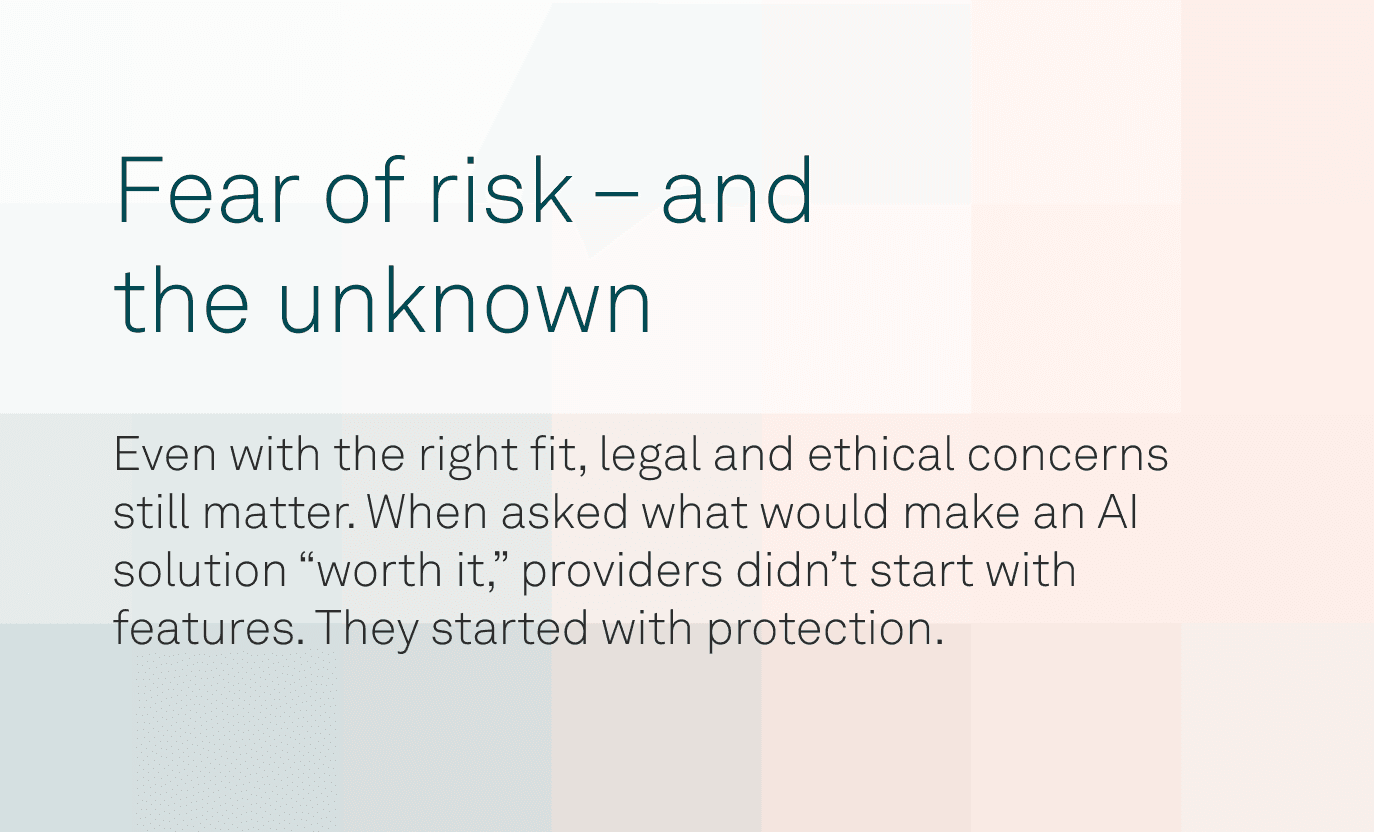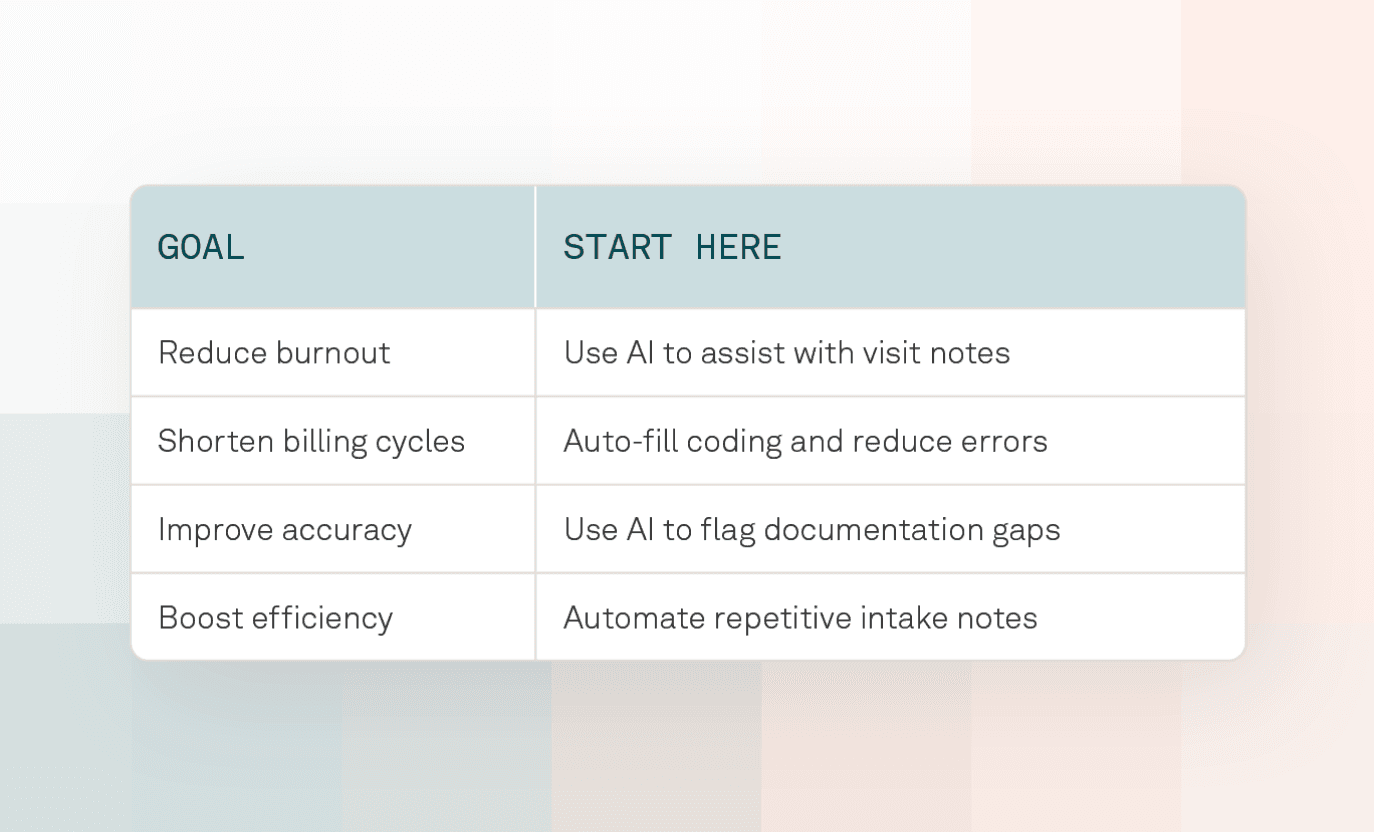AI in private practice: What are successful providers doing differently
Get honest insights from 100+ independent providers on how they’re using AI for documentation, what’s working, what’s not, and how to take the first step without disrupting your workflow.

Complete the form to get your resources
Get a sneak peek

What providers really think about AI — and why it matters
Most private practice providers see the potential of AI, but many aren’t sure where to begin. This guide shares what 100+ independent providers told us about burnout, after-hours charting, and the gap between curiosity and adoption, in their own words.
This free guide helps you:
- Hear directly from your peers about how they’re using AI, and why it’s working
- Understand the barriers to adoption, including trust, control, and time
- See why documentation is the safest, most impactful place to start
- Spot the differences between providers who are thriving vs. just getting by
Bring AI into the workflow, on your own terms
Read the full guideAI can save time, reduce burnout, and improve care, but only if it fits the way you work. The most successful providers are starting small, focusing on documentation, and choosing tools that integrate directly into their EHR.
Start with what works:
- Find the safest place to start using AI, based on what providers trust most
- Avoid common pitfalls, like black-box tools or disruptive workflows
- Learn how to evaluate AI solutions based on control, transparency, and impact
- Take your first step with confidence, backed by insights from practices just like yours
Still have questions?
You’ll get honest insights from 100+ private practice providers on how they’re using AI today, what’s working, what’s holding them back, and how to start without risk.
No. It’s designed for anyone involved in private practice operations, including physicians, practice owners, office managers, and administrative leaders.
It’s grounded in real-world input from over 100 independent practices, not vague predictions or generic marketing. You’ll hear what’s actually working, what’s not, and what to avoid.
Manual charting eats up time and leads to burnout. Providers already using AI say they’ve saved hours, reduced stress, and spent more time with patients, while others are still stuck catching up on notes at night.
Time back. Less burnout. And AI that works inside their existing EHR. The guide shares how today’s most successful practices are choosing tools that improve efficiency without sacrificing control or care quality.









